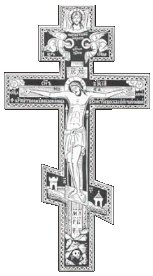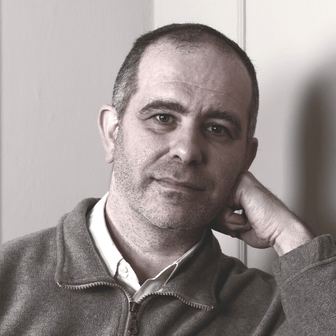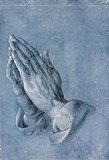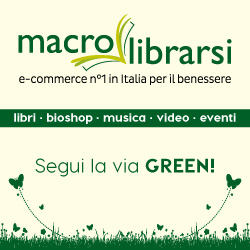The Orthodox Cross

A typical Cross with a low, slanted and rather long transverse, to which is joined a
simple support for the feet; the inclination reminds that “The Cross is Balance and
Justice”. On the low, inclined part, the impoverished “Old Jerusalem”
is portrayed, with the Temple Veil torn, in the opposite part the “New
Jerusalem” is raised.
Let’s examine the Cross from the top: On the first transverse, larger than the
Roman sign imposed by Pontius Pilate with the writing "INRI", one notes the cosmic sense
desired by Orthodox/Byzantine traditions, with the figure of Christ the Savior with a
halo up high, in which the customary Greek letters standing for "He who IS ", and
beneath, on the sides, the two Cherubims of six Wings and Human Face, connected to the
writing "Angels of the Lord ", who await the Soul and the Body of the Son of The
Omnipotent God; beneath the Angels, the phrase “King of Glory”; on the sides
of Limbo, the letters "Jesus Son of God ", and in the limbo, the two usual letters
already mentioned above. On the sides of the joist of the Cross, the Sun and the Moon
appear, representing the entire Cosmic system, lower, the inscription: "In the name of
Your sacrifice we await the resurrection of Your glory " - in some cases, this
inscription is substituted with the following words: "We bow at Your Cross and glorify
Your Resurrection ".
Christ’s Body is fixed to the Cross with four nails and not with three, as it
appears in the Western portrayal, and has its Head turned to the right; along the body
are noted two canes, the one on the right having a Spear on the end and the other having
a Sponge, a reminder of the crucial moments of the long Passion, with the relative
letters: at the base of the two canes, the inscription “Christ the
Overcomer”. .
At the point where the cross is placed into the ground, a few letters are carved
indicating the following phrase: "The place of the Crucifix becomes Paradise ". Still
lower appears Adam’s Skull signifying the fall of all humanity into sin and its
being redeemed thanks to the Passion and the Death of our Lord Jesus Christ.Jesus’
death, in the East’s best traditions, is never portrayed with pangs of agony and
with signs of His bloody Passion, but instead appears illuminated by a regal nobility.
The Byzantine-Orthodox crucifixes (Icons), having to respect the precise rules of design
and form severely dictated by the Ecclesiastical Tribunal , all appear of equal design
with little difference which we will report later; however, the size of this type of Icon
can change in an obvious manner, from a few centimetres to a few metres. .
Some more evident differences, admitted by the church, are the following: At the top of
the cross, in the place of the Holy Face, not painted by human hand, after we find the
image of God Omnipotent. On the sides, below the joist of the Cross, sometimes, two Icons
are found which follow down to the point at which the Cross is inserted into the Ground;
these Icons represent the Images, on the left, of the Virgin Mary and Mary Magdalene, and
on the right, of the Centurion Longrinius and St. John the Apostle and Theologian. These
Figures, even with great pain and sadness as a result of the death of the Christ, always
appear long-limbed and slender but never bent down in their tragedy.
In some examples of the Cross some inscriptions appear in the lower portion, which
generally are the following: Cross, Caretaker of the Universe, Ornament of the Church,
Strength of the King, Supporter of the Faithful, Glory of Angels and Ruin of Demons. The
Lord said: - With Patience I awaited your repentance for your sins and your conversion;
before My tremendous judgment I showed you will the way toward salvation.

Ciao,
mi chiamo Stefano.
Piemonte Sacro è la mia passione dal 2001.
AIUTA il progetto Piemonte Sacro a crescere
DONA SOLO 2 euro! Te ne sarò GRATO .




